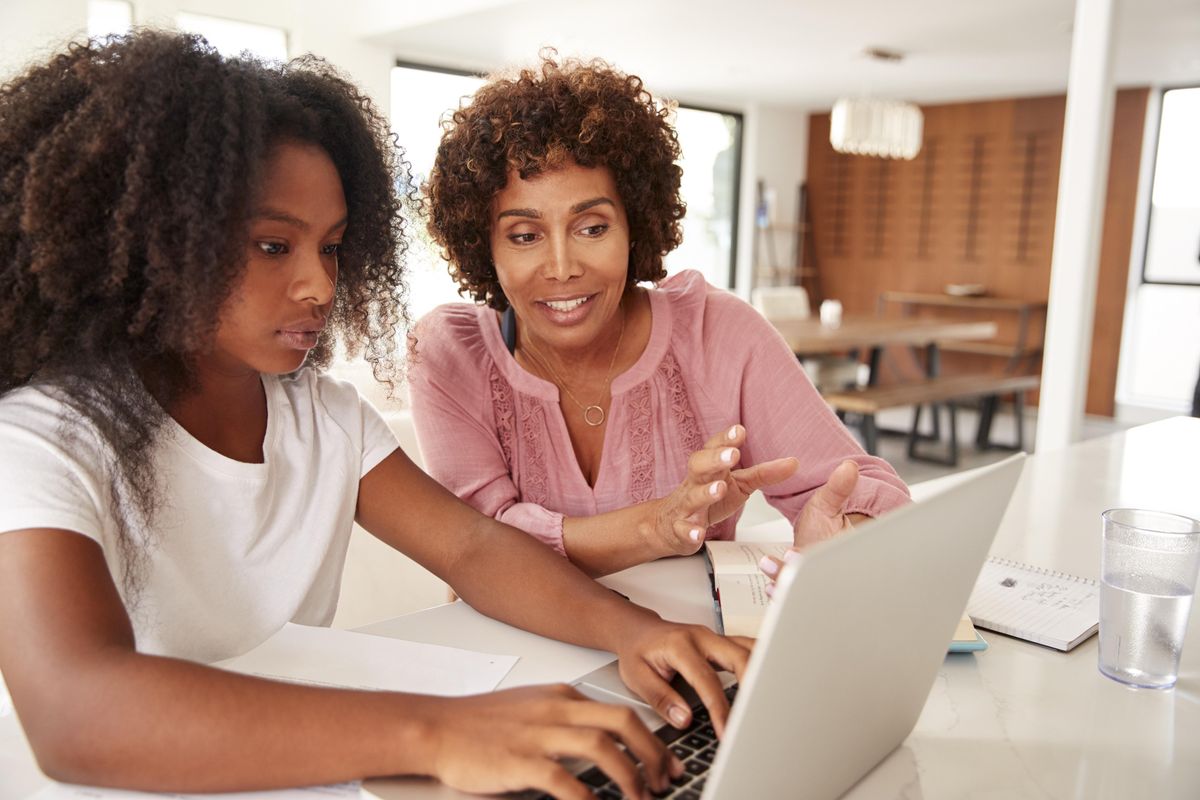
Even in a normal year, the college application and admission process can be fraught for both your dancer and you as their parent.
But add in all the distanced, virtual and remote complications caused by COVID-19, and the process becomes even more strained. Because while your dancer may be stressing about video auditions, you are also likely stressing about your child leaving your nest and heading to a city or campus you’ve never actually visited. How can you be sure a particular program is a fit?
Dance Teacher spoke with a university dance department director, an admissions officer and a high school guidance counselor to provide some tips for tackling college decisions—all from afar.
Reach out for help.
Although the stay-at-home lifestyle can feel isolating, you don’t have to go through this process in a vacuum. Contact a school’s admissions department and lean on them for info concerning academic requirements, paperwork and financial aid—but also to find out about the school’s atmosphere, location and career opportunities postgraduation. “As an admissions counselor, I’m the first point of contact for all things related to the school,” says Bobby Schrader, an assistant director of admissions and dance department representative at Boston Conservatory at Berklee. “I can put you in touch with current students, which is really the best way to find out about a school’s community as well as the surrounding area. For example, most of our upperclassmen live off campus, so they can give a true perspective on what it’s like to live in apartments here in Boston.”
If your student is considering a large university, Jan Erkert, department head and professor of dance at the University of Illinois at Urbana-Champaign, says it’s OK to contact the dance department directly. They’ll be better able to address dance-specific questions, especially when it comes to the audition process.
High school guidance counselor Abby McKelvey says that for her students at Baltimore School for the Arts, unclear and complicated video audition instructions have already been a major source of frustration. “Don’t be shy about picking up the phone to call the dance department and say, ‘This seems a little vague’ or ‘I’m not quite sure what you’re asking for,'” says McKelvey. “Recognize that this is also new territory for schools, and as such, they likely welcome questions and really do want to help.” McKelvey stresses that phone calls are better than emails: “You’re going to get more information that way,” she says, adding that while it’s better for your teen to make the calls, it’s OK if you step in occasionally too.
McKelvey also points out that the virtual audition process has exposed deep inequities in the college application process. Some students, for instance, can’t easily attend a virtual audition on a Saturday morning if their household has spotty internet, while others might not have designated spaces for dance. In these cases, McKelvey is her students’ biggest champion and has frequently made calls to college admissions departments to figure out alternatives. “Lean on your high school’s guidance counselors to make uncomfortable calls or make inquiries about aspects that don’t feel right,” she implores. “Students should not have to make these calls themselves, and getting help from a guidance counselor will not hurt your child’s admissions chances.”
Utilize new resources from schools.
Though Boston Conservatory at Berklee has been operating remotely and unable to host any in-person tours or events this semester, the school offers virtual tours of its campus along with virtual info sessions that cover the school’s academic programs, application and audition processes, residential life, career services and scholarship options. “We’ve hosted faculty spotlights and sessions when prospective students can ask questions,” says Schrader, noting that they’re good opportunities to get a sense of whether a program fits with your child’s desires. “What environment is your dancer looking for? How many students are in each class? What types of collaborations with other students occur?”
If there’s any silver lining to not being able to visit a school, it’s that these virtual offerings empower students to investigate dance programs more in depth than in past years—all without paying for travel. And because everything and everyone is remote, your student may be able to join in a class or watch rehearsals to see if they can see themselves within that program. “Five of my students were able to take a virtual class at George Mason University, which gave them a sense of the school’s training style, faculty and how much they felt they’d be challenged,” says McKelvey.
Set realistic timelines and expectations for video applications.
For in-person and virtual video auditions alike, your dancer will likely spend weeks choreographing and rehearsing. For in-person auditions, that’s where prep ends. But video auditions will also entail making sure the lighting, sound and edits are just right.
There’s no need to invest in fancy equipment, though, or to obsess over the technical elements of the video. Clear lighting that shows the dancer’s whole body and a clean space are ideal, but overall, “We’re looking for that passion and interest in our program,” says Schrader. “We’ll be able to see that no matter how small the screen is.”
Even if your dancer is working with a small space or other limitations, college programs will appreciate a creative approach to those obstacles. “We want to see what you can do inside that kitchen, or between two beds,” says Erkert. “If it’s a cement floor, can you put on gym shoes? Show us something that resonates with what they have.”
Realize that a video audition may be psychologically taxing on your dancer. “In person, auditioning is like ripping off a Band-Aid—you go in and just do it,” says McKelvey. “But with video recordings, you can keep doing take after take.” That may seem like a great opportunity, but for perfectionists, reviewing footage of themselves on iPhone screens can be overwhelming. To help your dancer, McKelvey recommends, ask a teacher for their opinion. “Once your dancer has five to 10 good takes, show a teacher. Don’t let your dancer overthink it, and don’t, as the parent, make the choice. A teacher has a much more objective eye.”
Ask about COVID-19 policies and track cases.
In normal years, a popular starting point for college decisions is location: Does your dancer want a program within a typical college campus or in a bustling city? Now, however, there’s an additional layer, as some college campuses have created safe bubbles whereas others are virus hotspots.
“It’s hard to curtail the socialization that young people want,” says Erkert. “Parents really need to look at the positivity rates of the campus, the tracking and testing policies the school has in place, and how much students will be doing live versus online.” Schools’ websites are a good place to start when researching protocols and safety measures—then talk to the dance departments directly. “Here at the University of Illinois, our community is tested two to three times a week, and it’s free for all students. There’s also an app that tells us if a student has been regular in his or her testing,” she explains. “In our department, for example, our studios are fog disinfected twice a day. We have 10-foot squares in each studio and turned a basketball court into an outdoor studio. I’d be willing to talk to any parent that wants to know about our COVID protections, and I think most chairs at any school would agree. We’ll share what we’re doing and what the struggles are.”
Erkert also suggests seeing what dance programs are currently offering in terms of live classes versus Zoom classes, and any performance opportunities. “Because the university has such strong testing and tracing practices, we were able to do a full, livestreamed performance in our theater,” she says. Look at social media pages to see photos from class or recent performance shots. Are the dancers in Zoom boxes or onstage? While it’s hard to know what the future holds, Erkert maintains that what a college campus is doing right now points to its response to an ever-changing situation. “Even if there’s a vaccine next year, I can imagine that we will be masked and practicing these safety measures for a long time,” she says. “It’s crucial for parents to make sure that there are multiple layers of protection in order for their child to dance and to dance safely.”




